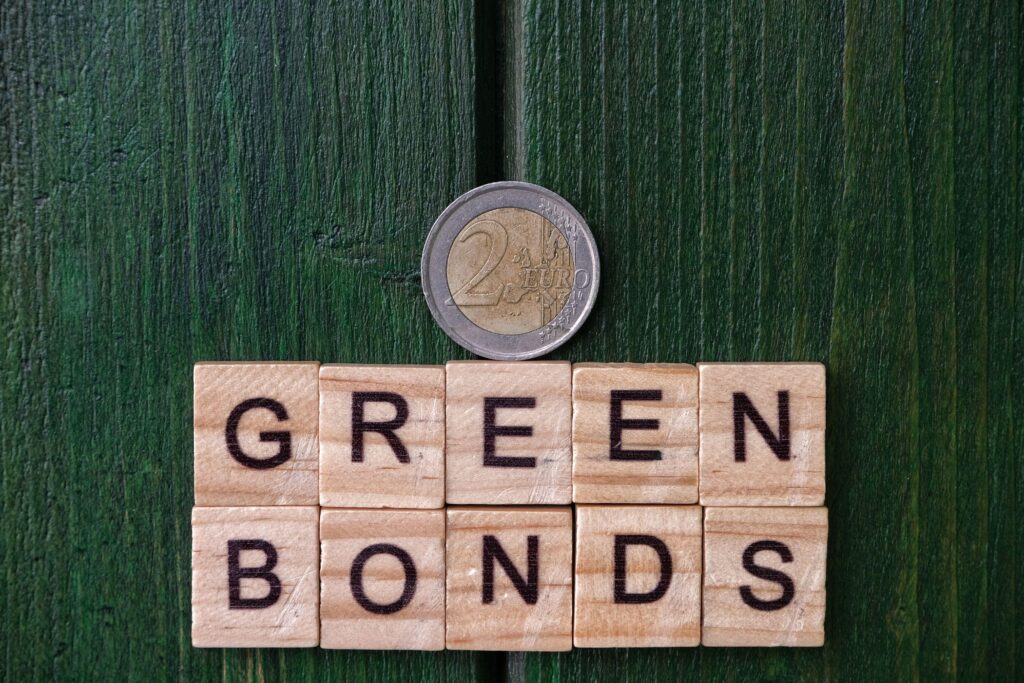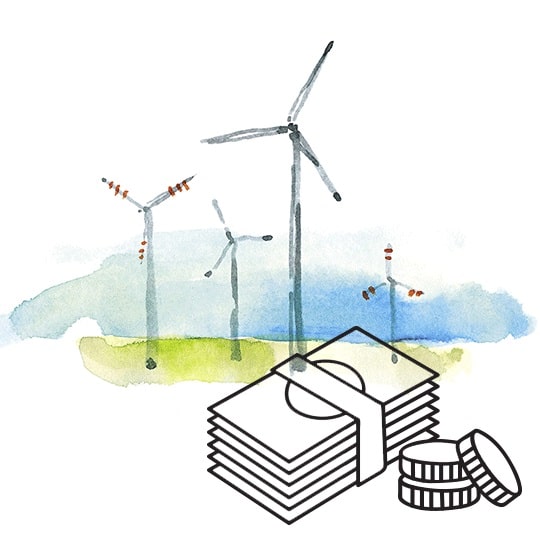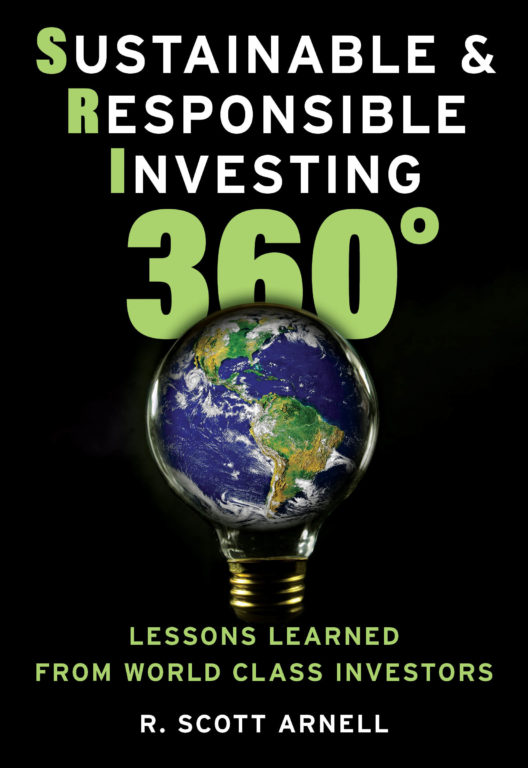
The following Q&A guide provides a concise introduction to the most frequently asked questions about the green bond market that will jump start your understanding of green bonds.
What are green bonds?
A green bond is a bond issued to raise capital for activities that serve to reduce or prevent environmental or climate damage. Issuers of green bonds often have the opportunity to raise capital at lower yields than non-green (traditional) bonds from the same issuer, the so called “greenium”.
Among the largest issuers of green bonds are individual sovereigns, such as the United States, China or the European Union as a supranational but corporations and financial institutions also issue green bonds on a large scale. Projects often focus on clean and sustainable infrastructure developments.
Green bonds allow institutions and individuals to align their investments with their values, by funding projects that help curb the detrimental impact of climate change. They can also be used as a hedge against climate change risk and many investors actively engage with issuers to exert influence on companies and advocate for environmentally friendly initiatives.
Green bond investors are typically more patient and willing to invest with a longer time horizon than what might otherwise be available in the bond market, and as Bloomberg pointed out in 2022, defaults in the green bond market are rare.
What’s the history of green bonds?
The world’s first green bond ever was issued for €600 million euros in 2007 by the European Investment Bank (EIB), and in 2008 the World Bank issued its own green bond for SEK 2.3 billion (approximately $301 million at the time), in partnership with Swedish finance group Skandinaviska Enskilda Banken AB (SEB). At first, green bonds were only available to institutional investors, but soon the availability of green bonds expanded to the retail market and by 2012, green bond issuance totaled approximately $2.5 billion. In 2013, the International Finance Corporation (IFC) issued the market’s first global U.S. dollar benchmark-sized green bonds, setting a precedent to further strengthen the green bond market.
By 2017, Moody’s reported that the market had grown to more than $160 billion and represented more than a third of all bond issuances. Since then, the market has continued to surge. By 2021, the cumulative issuance of green bonds exceeded $1 trillion and includes green bond mutual funds, ETFs, and UCITs.
The global push to achieve net-zero carbon emissions by 2050 and the Covid crisis (“building back better”) has acted as an additional accelerator to the green and social bond market.
What makes a green bond “green”?
One challenge in connection with green bonds is the lack of a uniform definition of what constitutes “green”. In order to create more transparency and trust, various organizations are striving for standardization.
In 2014, the Green Bond Principles (“GBP”) were established and provided a voluntary standard for green bonds. The GBP were aimed at providing clarity and transparency for issuers and investors and cover the processes for designating, disclosing, managing, and reporting of green bonds. Ongoing monitoring and development of those guidelines is now independently hosted by the ICMA.
In 2020, the European Union announced the establishment a EU green bond standard (“EUGBS”). The proposed regulation aims to set a ‘gold standard’ for how companies and public authorities can use green bonds to raise funds on capital markets, while meeting tough sustainability requirements and protecting investors. To provide additional guidance, the European Union also developed a taxonomy of activities that are classified as sustainable.
Despite the establishment of the GBP and EUGBS standards, these are both voluntary and no binding standards for green bonds currently exist.
What kinds of projects are funded with capital raised by green bonds?
Examples of projects funded by green bonds include those focused on energy efficiency, renewable energy, sustainable agriculture and aquaculture, clean water, and technologies that help mitigate climate change.
The World Bank is a major issuer of green bonds, having issued over 160 green bonds in 22 currencies, totaling nearly $15 billion as of 2021. One of the World Bank’s first green bonds financed the Rampur Hydropower Project, which aimed to provide low-carbon hydroelectric power to northern India’s electricity grid. The project now produces 1,770.68 GW per year, preventing 1.4 million tons of carbon emissions.
Other successful examples include the issuance by U.S. housing finance company Fannie Mae of more than $100 billion in green bonds. The company’s green financing supports more sustainably energy efficient, and affordable housing through its Green Building Certification and green property improvement program.
In 2021, the EU issued a 15-year green bond that raised $13.9 billion, the largest single green bond ever, to finance member states’ environmentally beneficial projects. Bram Bos, lead portfolio manager for green bonds at NN Investment Partners, said in a press release that the scale of this issuance would increase liquidity in the green bond market and that it is becoming much easier to “greenify” government portfolios with massive issuances like this from the EU.
How do green bonds connect to the ESG picture?
While nearly all green bonds will likely include ‘hygiene’ ESG (environmental, social, and governance) investment factors, green bonds by definition have an “E” (environmental) focus and adhere to Green Bond Principles. Bonds that focus on the “S” (social) are called “social bonds” and adhere to Social Bond Principles. Some green bond issuers may also apply standards of governance, the “G” component in ESG.
- Examples of environmental projects funded by the sale of green bonds include the creation of wind and solar energy farms, upgrades to buildings to make them more energy efficient, clean water initiatives, and technologies that reduce reliance on fossil fuels to curb carbon emissions.
- Examples of social bond projects funding the social component include those that promote and support fair labor practices; affordable housing; human rights initiatives; charity and philanthropy; and greater access to public transportation, education, and health care.
- Green bond initiatives or funds that apply governance criteria may, for example, require companies invested in to meet specific criteria for hiring of women, protection of indigenous communities, or divesting from activities deemed socially harmful ─ such as sales of tobacco products or assault weapons.
The term Sustainable Bonds is now used to comprise green, social, sustainable, and sustainable-linked (“GSSS”) bonds.
What are the main differences between traditional bonds and green bonds?
The main difference between a green bond and a traditional bond is that with a green bond, the use of proceeds is ‘ring-fenced’ which means that the proceeds of the issuance can only be used for the specific purposes designated in that green bond’s Green Bond Framework. Because of these green criteria, the issuance of green bonds is also slightly different, requiring extra steps. Those include:
- Defining the use of proceeds and how that meets green bond (environmental) eligibility standards,
- Describing the issuer’s internal review process for selecting green projects to be funded,
- Establishing internal managerial oversight mechanisms and reporting processes to ensure that funds are allocated to those projects as promised, and
- Having a pre-issuance external review conducted to verify that the green objectives are legitimate.
What are labeled and unlabeled green bonds?
- Labeled green bonds meet specific industry standards and are labeled with official verification through independent third parties (such as ICMA) that the proceeds will fund sustainable, environmentally friendly, climate aligned projects.
- Unlabeled green bonds lack such verification. For that reason, they may represent higher investment and environmental risk and may carry higher yields in order to compete with labeled green bonds.
Do green bonds differ from “climate bonds” or “blue bonds?”
- Green bonds and climate bonds are essentially the same, although some investors use the term climate bonds to refer to green bonds specifically targeted toward reduction of carbon emissions.
- Blue bonds are a subset within the broad category of green bonds, and are focused on projects related to protection of the oceans and marine-related environmental resources.
What are “transition bonds”? Are they green too?
Transition bonds, as the name implies, are bonds designed to fund the issuer’s commitment to a greener or more environmentally friendly and sustainable business model. They help fund projects, for example, that support transitioning toward net zero climate emissions or a shift away from fossil fuels and into clean energy alternatives.
A good example of a transition bond was the one issued by Cadent Gas, the U.K.’s largest gas distributor. Cadent Gas sold a €500 million ($608 million) transition bond in 2020 to fund a project that helps reduce methane leakage from its pipelines. While the company’s heavy investment in fossil fuels does not meet the “green” standard, its transition bond initiative is a step in the right direction as it attempts to transition toward a greener future.
Are there many green bond mutual funds and ETFs yet?
There are an increasing number of green bond mutual funds, ETFs, and UCIT vehicles as green bond popularity continues to grow. Here are some good examples:
- iShares Global Green Bond ETF (BGRN), which offers exposure to U.S. dollar-denominated, investment-grade green bonds
- Calvert Green Bond Fund, which seeks to maximize income through diversified green projects, solutions providers, and environmental leaders
- Van Eck Green Bond ETF, which seeks to replicate (before fees and expenses) the price and yield performance of the S&P Green Bond U.S. Dollar Select Index
- Franklin Liberty Euro Green Bond UCITS ETF, which offers exposure to the European greed bond market
- Lyxor Green Bond ESG Screened (DR) UCITS ETF – Acc, which seeks to track the Solactive Green ESG Bond EUR USD IG TR Index, a benchmark of EUR and USD denominated investment-grade green bonds issued by sovereigns, supra-nationals, development banks, and corporates.
An example of an additional index that provides an overview on the market is the Bloomberg Barclays MSCI Global Green Bond Index.
How does the analysis of green bonds differ from conventional bonds?
The process of identifying and quantifying risks is essentially the same as with a conventional bond, except that the use of proceeds is scrutinized differently to ensure that the projects funded meet standard environmental criteria. Also, due to market demand, some green bonds may command a premium or a tighter credit spread, and some green bonds may carry some liquidity risk. One of the areas deserving unique analysis is the potential for greenwashing, because an investor may overpay or not have their goals for investing “green” met if the green bond proceeds are not applied as proposed.
Are there “greenwashed” green bonds?
Greenwashing is a term that can be used to describe green bond issuances based on false or misleading claims that promise a positive environmental impact when, in actuality, there isn’t one. For example, in 2018 Indonesia sold $1.25 billion of green bonds but further investigations cited the possibility that some of the projects those funds supported were involved in deforestation.
Similarly, the Spanish oil and gas company Repsol planned to issue green bonds to improve its operational efficiency, but Nuveen passed on the issue because it determined that the project could ultimately result in extracting more oil from the ground. Likewise, Time Magazine reported in 2021 that some climate-themed funds also held assets in the fossil fuel industry.
Today there is a “greenium” phenomenon within green bonds. That term refers to the fact that because the actual interest rates companies can issue green bonds at is sometimes cheaper and more attractive compared to regular, non-green bond yields, there is a financial advantage for companies to issue a green bond rather than a regular bond.
Mitch Reznick, Head of Research & Sustainable Fixed Income told me that investors are willing to pay the greenium, because these bonds tend to be less volatile and, if credible, the labelled security is financing positive change. Because sustainability is “hot” right now, he advised that green bond investors should be aware that “There are some in every corner of the capital markets that take a superficial approach to sustainability to exploit the opportunity.”
Accordingly, companies now have a financial incentive to issue green bonds which can invite misleading or rather deceptive gaming. Or as Mark Dowding (BlueBay’s Chief Investment Officer) explained to me, a project might have been built anyway without a green bond issuance. In that case the issuer is not really financing additional positive change. “Managers need the knowledge and expertise to test the credibility and credulity of the issuers that are in the market,” he added. “That’s driven by human capital, passion, training, and experience.
Transparency is the key, which is why credible green bonds are often verified by impartial third parties to ensure their green status. Mitch Reznick notes that measuring ESG impact is vital and can be challenging, which is why “it is really important to have a proprietary, credible approach.” Some funds also voluntarily stipulate that they will incur financial penalties if their stated environmental goals are not met. Many financial institutions are advocating for greater disclosure and transparency, and for the establishment of industry standards. The EU is working to create a set of green standards to hold bond issuers accountable, and the SEC has created a task force to address the problem of greenwashing as it pushes for greater disclosure when it comes to labeling bond funds as “green” or “ESG.”
For more information, please refer to the section above “What Makes a Green Bond Green ?”.
What are some additional resources to learn about green bonds?
Here are some other helpful resources to learn more about green bond investing:
- Climate bond best practices guidelines
- The CFA Institutes case study on green vs. conventional bonds
- The Climate Bond Initiative (a great resource for understanding the development of green bond standards and certifications, market intelligence, and more)
- The Climate Board Initiative’s primer on green bond labeling and industry standards
- The IFC’s latest Green Bond impact report
- ICMA Climate Transition Handbook
- Environmental Finance (2022): Sustainable Bonds Insights 2022
- European Commission: European Green Bond Standard







